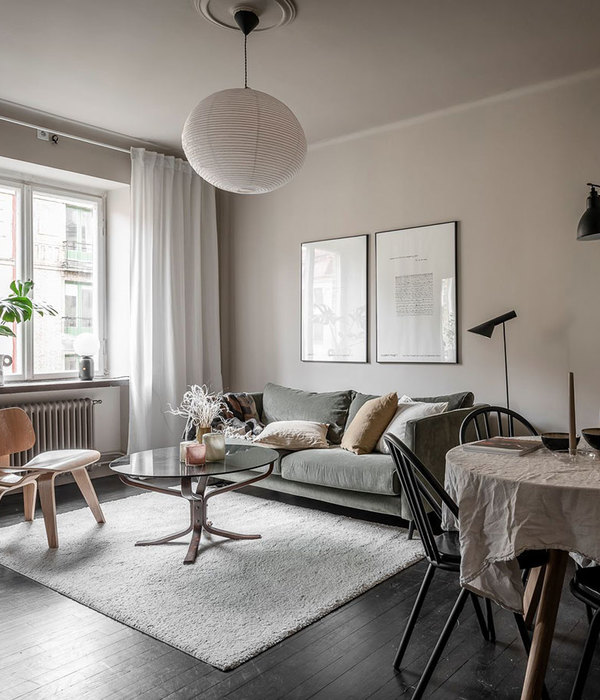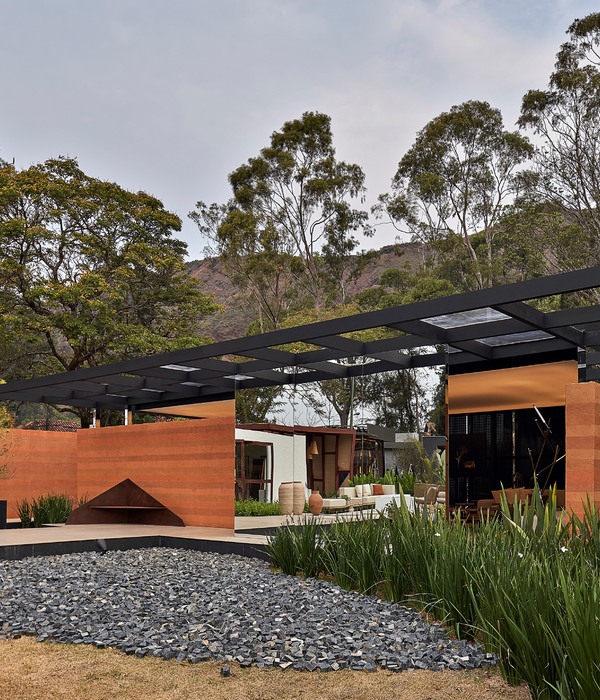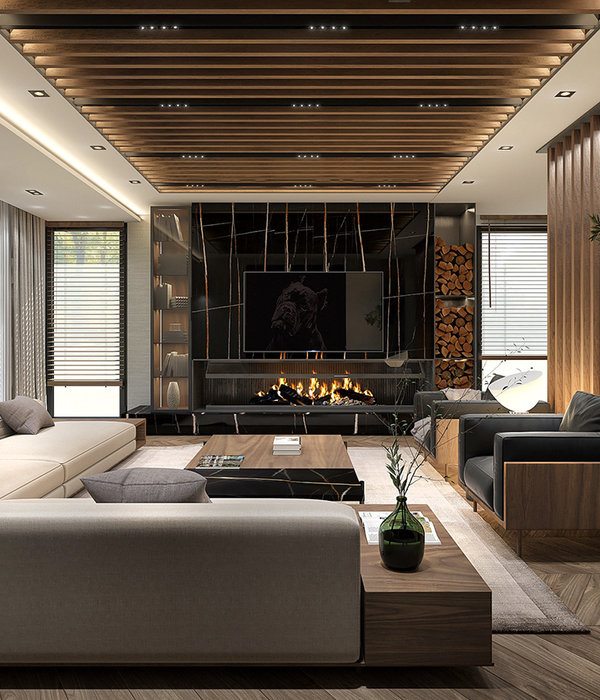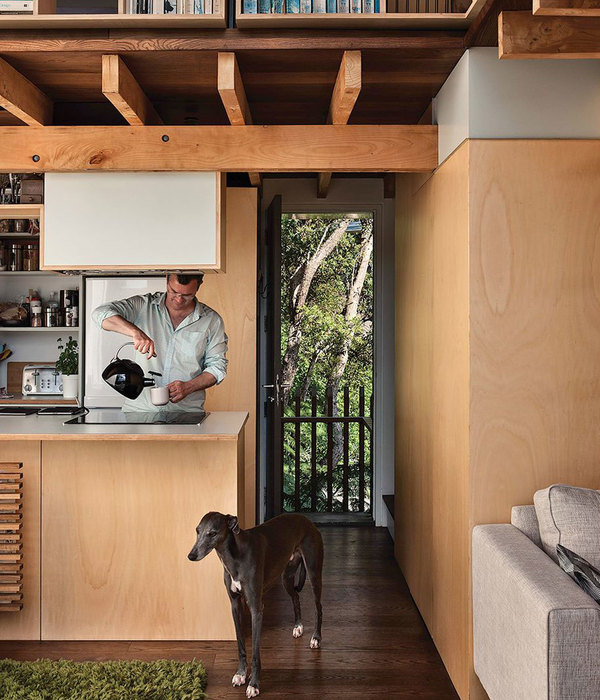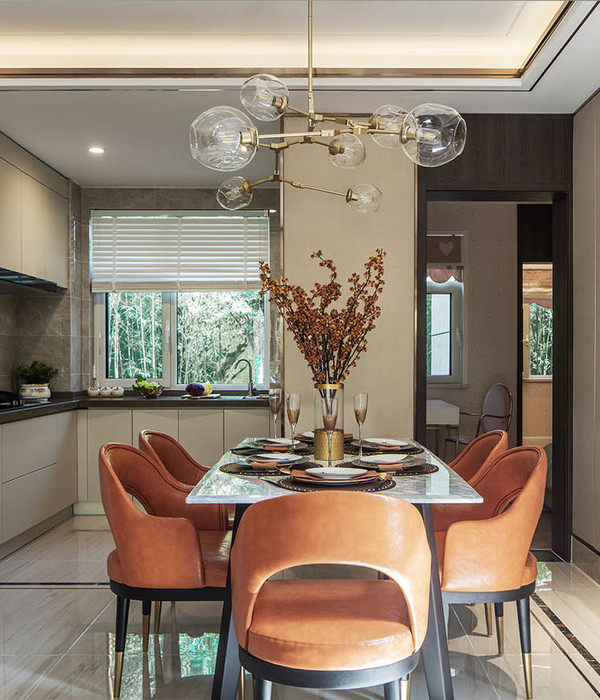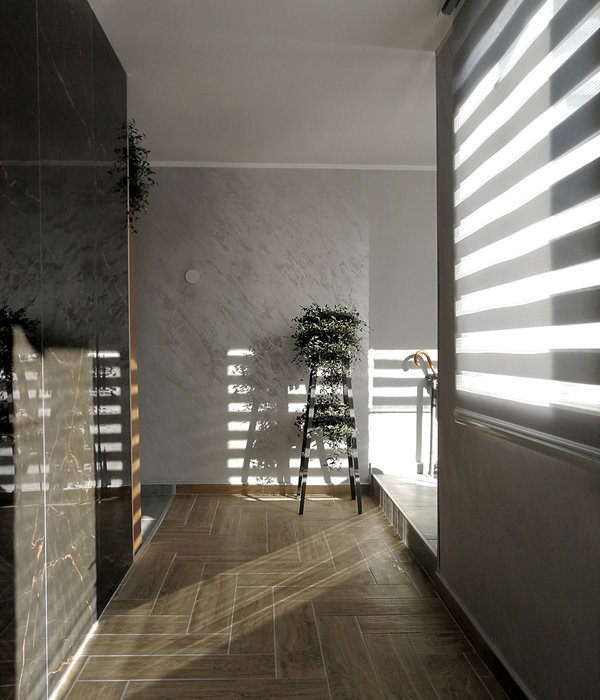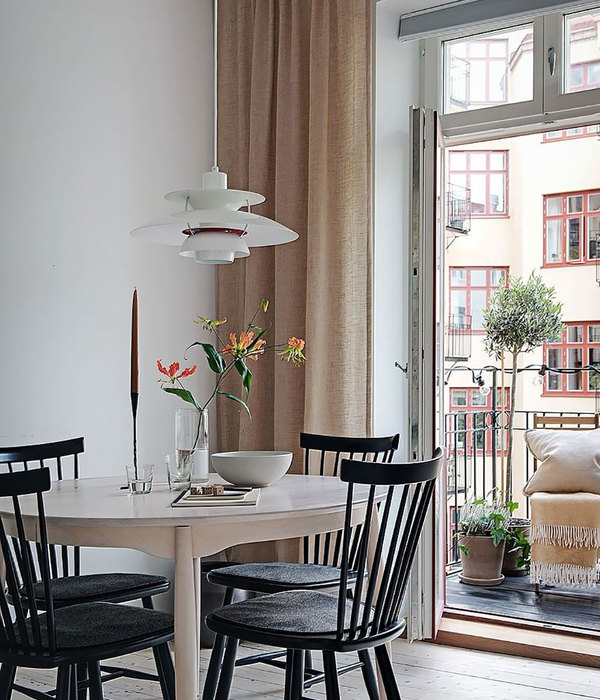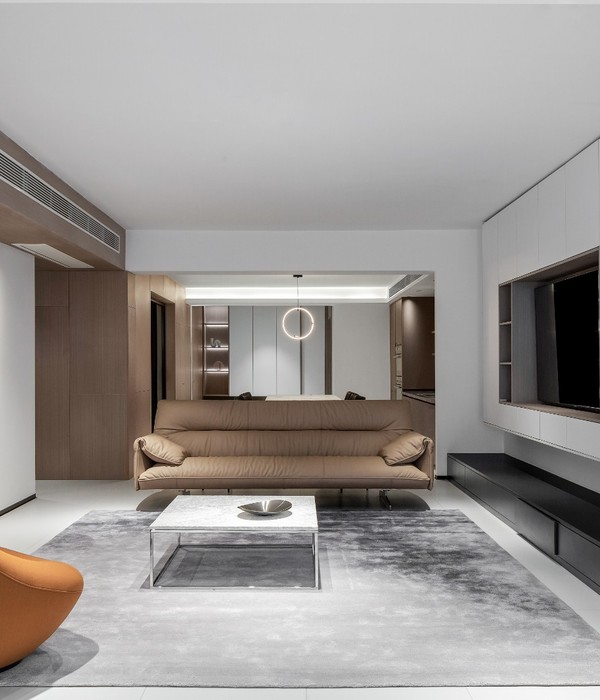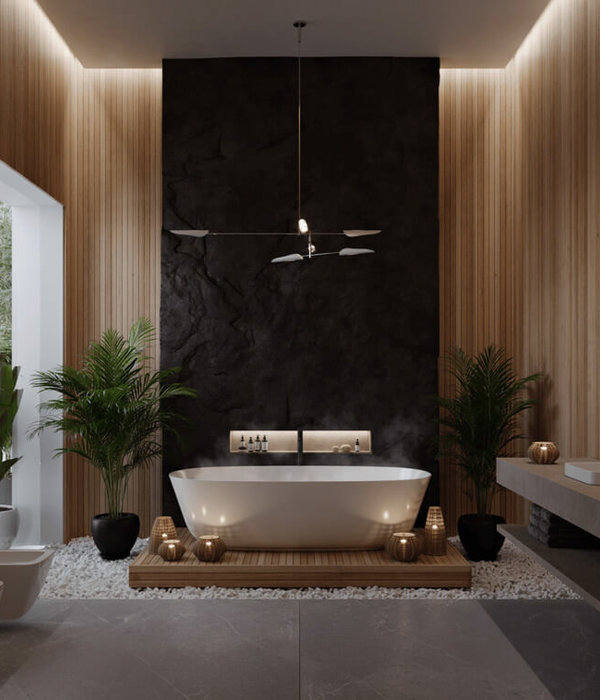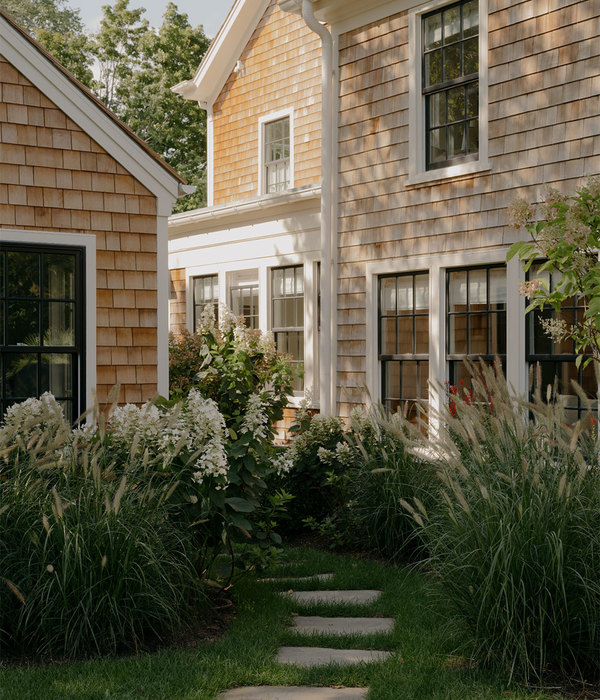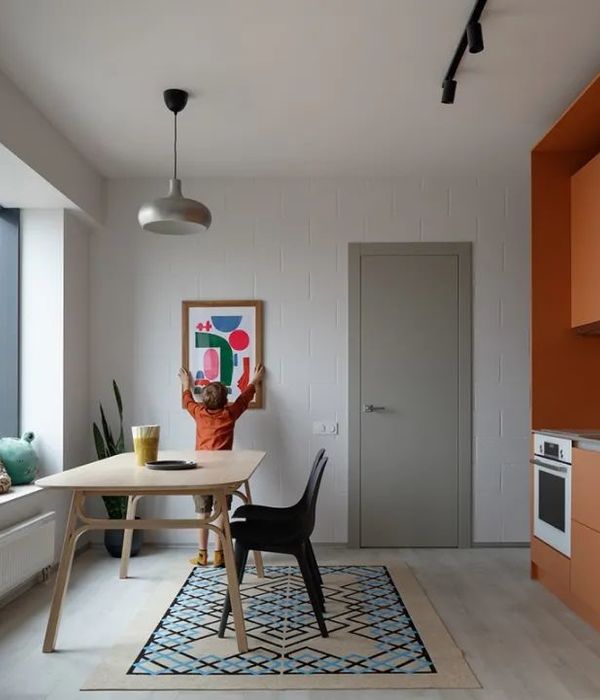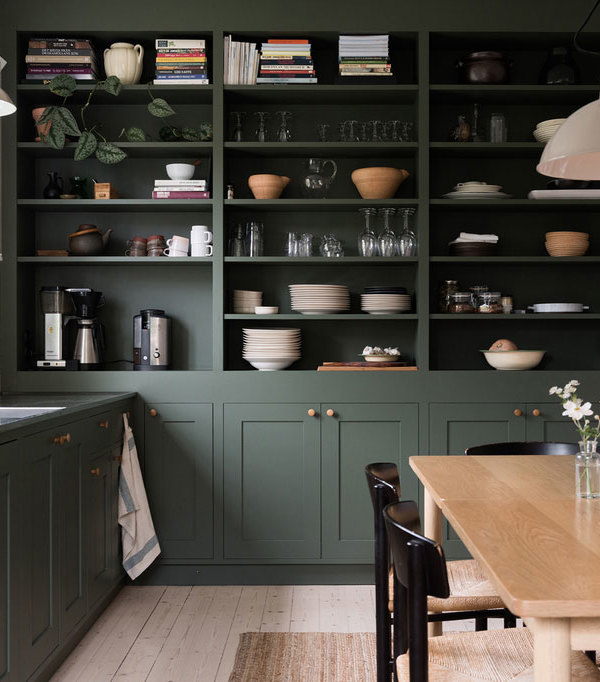本项目位于成都香格里拉酒店低层部临街位置,同时对炉端烧和会席料理进行设计。这两家属于不同业态,但共有一个厨房。我们参考了庶民的普通民宅、武士的茶室、来自不同文化的传统等因素,从中提取具有特点的部分,进行了多重式展开,以打造可在岁月流逝中经得起考验的室内空间。
The project is located on the ground floor of Chengdu Shangri-La Hotel with a street frontage.There are two categories with a single kitchen,one is for the Japanese-style barbecue Robatayaki, the other is for Kaiseki which is a traditional Japanese meal brought in courses. Referring two different traditional typology of Japanese houses, civilian’s house and tea-room of Samurai, we extracted characteristic elements and expanded themmultiple-layered,so to create an enduring space without being consumed.
▼炉端烧室内一览,提取普通民宅的特点设计,interior space of the Robatayaki restaurant, inspired by traditional Japanese civilian’s houses
© 刘伟| 聿空间摄影
▼会席料理空间,提取茶室元素设计,interior space of the Kaiseki restaurant, inspired by tea-room of Samurai
© 刘伟| 聿空间摄影
炉端烧,属民宅系列,参考的是吉岛家住宅位于高山、拥有动态木质结构的特点。极力拔高室内的天花高度、搭建碳化木的框架、设成镜天花的最顶部…通过这些手法,让木质结构体一直延伸到了上部空间。通过外墙上开出方格图案的开口部、装有和纸光墙,有效控制光的方向,使其突出结构体的优美线条。
In the part for Robatayaki which is on the lineage of civilian, we referred to Yoshijima House in Gifu which has a dynamic wooden structure. First we installed an aged wooden frame in the utmost height, then put the mirror on the ceiling to show dynamic reflected image with double height wooden structure. On the wall facing the street, windows and washi light box are set in checkered pattern, and those directional light raise the wooden frame elegantly.
▼炉端烧餐厅室内,拔高的天花中搭建木框架,interior of the Robatayaki restaurant, wooden frame installed in the utmost height
© 刘伟| 聿空间摄影
▼天花铺设镜面,让木制结构向上延伸,mirror on the ceiling extends the wooden frame upward
© 刘伟| 聿空间摄影
© 刘伟| 聿空间摄影
© 刘伟| 聿空间摄影
▼外墙设有方格开口,与天花结构呼应,透光和纸控制光的方向,突出结构体,checkered pattern openings on the wall corresponded with the wooden frame, soft light coming through the washi box underlined the structure
© 刘伟| 聿空间摄影
© 刘伟| 聿空间摄影
▼方格墙面细部,details of the checkered pattern wall
© 刘伟| 聿空间摄影
会席,属茶室系列,利用茶室建筑的斜天花元素,通过多层重叠的方式为小空间赋予多样性。天花板,通过细扁柏箦子结构的倾斜重叠,呈现出摩尔条纹天花,演绎出不同于日常的仪式感和独特氛围。单间,同样采用箦子结构,由设在地面的向上照明、天花的顶部照明等元素,为小空间营造出多样性。
In the part for Kaiseki which is on the lineage of tea-room, we overlapped tilted ceilings that is a typical language of traditional tea-room. These ceilings made by Sunoko which is a small fine louver panel has different angle each other, and the moire pattern caused by those layering directs extraordinary. The private rooms also consist of Sunoko elements, and upper light behind the wall and top light on the ceiling makes diversity in the tiny room.
▼会席空间,采用摩尔条纹的倾斜天花,Kaiseki space with oblique ceiling of moire pattern
© 刘伟| 聿空间摄影
▼细扁柏箦子结构倾斜重叠形成的天花,small fine louver panel overlapped in different angles, creating the oblique ceiling
© 刘伟| 聿空间摄影
© 刘伟| 聿空间摄影
▼单间同样采用箦子结构,Sunoko elements were also used on the ceiling and walls of the the private rooms
© 刘伟| 聿空间摄影
© 刘伟| 聿空间摄影
▼单间之间的推拉门完全打开后可以形成一个大的聚会空间,remove the sliding door between the two private rooms to create one large gathering space
© 刘伟| 聿空间摄影
© 刘伟| 聿空间摄影
外立面,借鉴约翰·伍重(Jorn Utzon)曾经说过的一句“日本建筑的特点在于屋顶”,将外墙设计成为屋顶。炉端烧原想采用茅草,但是考虑到防火规范,饰面改用秸秆土墙效果的材料。会席的外墙设计,采用了藤森先生开发的做法,在薄铜板上增加了人为加工效果而成,外墙完成面的效果如同用铁锤敲打而成的铜器般,很有质感和味道。尤其是铜板,会随着岁月的增加,几十年呈现出不同效果,在现当代消费社会商铺设计迫于无奈往往会选择一种昙花一现式短命效果,而我们则希望这次的项目能够体现出一种不易被消费、耐得住时间考验的、持久且宝贵的品格。
The façade, as Jorn Utzon once said “the characteristic of Japanese architecture is the roofs”, is designed to be like roofs. That of Robatayaki should have been defined as thatch,but due to thefire code, it is now painted mud taste with rice straw. That of Kaiseki is covered with ruffled copper plates which was invented by Fujimori, it will look like a traditional copperware finished by hammers. Above all, the aging of the copper can be enjoyed for a long time, in the consumption society where the life span of shop interior will be often very short, we hope this project has durability as it won’t be easily consumed.
▼炉端烧外立面,采用秸秆土墙效果的材料,与室内结构相呼应,facade of the Rotabayaki restaurant using mud taste with rice straw, corresponded with the interior structure
© 刘伟| 聿空间摄影
▼会席餐厅外立面,采用加工过的铜板,随时间流逝会呈现出不同效果,facade of the Kaiseki restaurant with treated copper, which could be enjoyed in a long period of time
© 刘伟| 聿空间摄影
▼平面图,plan
▼剖面图,sections
地址:中国成都市 面积:173.3㎡ 室内设计:堤由匡建筑设计工作室(堤由匡、史维维、庞宇) 照明设计:Lightment (田中圭吾、金森善弘) 设备设计:北京炎黄联合国际工程设计有限公司(鲍连生,张广强,梁利伟,张慧) 撮影:刘伟| 聿空间摄影 竣工:2018年10月
Address :Chengdu, China Srea:173.3㎡ Interior Design:Tsutsumi & Associates (Yoshimasa Tsutsumi、Weiwei Shi、Yu Peng) Lighting Design:Lightment (Keigo Tanaka、Yoshihiro Kanamori) Facility Planning:Beijing Yanhuang International Architecture & Engineering Co.,Ltd.(Liansheng Bao, Guangqiang Zhang, Liwei Liang, Hui Zhang) Photo:Liu Wei
{{item.text_origin}}

